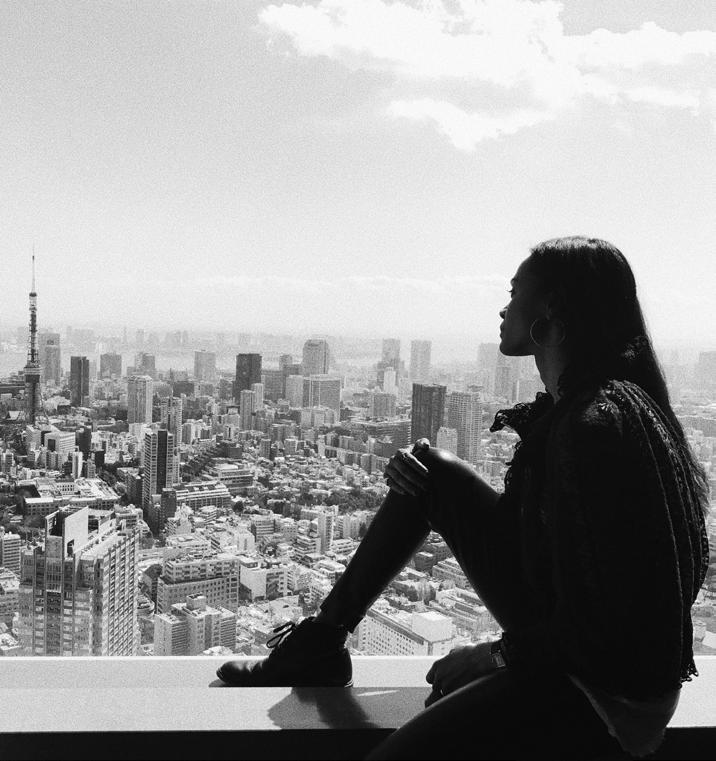
5 minute read
ANA-Experience Class
EXPERIENCE CLASS - ANA
In September 2013, French-Japanese TV presenter Christel Takigawa gave a presentation to the International Olympic Committee in Buenos Aires in support of the ultimately successful 2020 Tokyo Summer Olympics bid.
Advertisement

As part of that, she introduced international audiences to a concept few had heard of before. That of omotenashi, or Japanese hospitality.
The Michelin Guide explains the term as follows: “Omote” means public face – an image you wish to present to outsiders. “Nashi” means nothing. Combining them means every service is from the bottom of the heart – honest, no hiding, no pretending.”

According to Tokyo Weekender, at that 2013 IOC conference, “Using a dazzling smile and graceful gestures, Takigawa precisely spelled out O-MO-TE-NA-SHI as the core attribute of Japan’s legendary hospitality, and won the day, so to speak. Tokyo was picked to host the 2020 Olympic Games.”
Thanks to that 2013 bid and speech, omotenashi is now a term that has greater currency outside Japan. Which means a number of Japanese brands have started using it, including All Nippon Airways (ANA).
For example, starting in 2013, ANA launched an annual Omotenashi Professional Masters contest for its flight attendants. The idea is to reward staff who “graciously anticipate customers’ needs before they’re expressed.”
The most recent contest, staged in June 2017, drew winners in both individual and ‘team’ categories from among 7800 contestants, with flight attendants based outside of Japan winning two out of the three categories.

V
The idea of using omotenashi as a marketing tool has now been extended to a campaign launched in North America, called ‘Experience Class.’

Featuring content and a soundtrack created by Japanese-American DJ and music producer Steve Aoki, the campaign explores Japan and Japanese culture in a “unique, authentic way.” This includes content which defines and centres on omotenashi.

According to ANA, the launch video showcases the “cultural tradition that passengers on ANA can look forward to, including an unparalleled welcome before stepping foot on the plane, cuisine that is artfully crafted by master chefs, premium entertainment, and an attention to service and detail that stays with you long after the flight.
In addition to being available on YouTube, the video opens up in a full screen view when you first click on a special ANA Experience Class micro-site - it is particularly striking if you watch it on a laptop or desktop.
The site then contains several subsections, which explores food, fashion and culture (loosely defined, it includes for example “six Tokyo sites that will make your Instagram followers swoon”). In addition to Steve Aoki, content collaborators include actors Zoe Saldana and Scott Eastwood.
All three collaborators have produced content on the site showcasing a feature of Japan they particularly liked. For example, Zoe Saldana takes readers on a photo tour of Tokyo, as well as a producing a guide to in-flight beauty essentials.
Scott Eastwood featured in a short video about his trip to Tokyo on ANA and his first day in the Japanese capital. Meanwhile, Steve Aoki has created five Spotify playlists, ranging from ‘Japan’s hottest hits’ to ‘Touchdown in Tokyo.’
CONTENT LED-MARKETING BY ANA
In September, we featured ANA on the cover due to its on-going ‘Is Japan Cool’ campaign, which for the past five years has been highlighting different sides of Japan.
We called ‘Is Japan Cool’ one of the best destination websites we’d seen, and applauded ANA for its exceptionally high quality, for the fact that it is informative and interactive and for the fact that ANA is consistently uploading fresh content with different content creators rather than letting it go stale, as some destinations sites do.
We’d praise ‘Experience Class’ for the same reasons. The videos are snackable, just the right length to engage and inform. It seamlessly weaves in the spirit of ‘omotenashi’ you experience on ANA flights to the spirit of adventure and discovery you find when you touch down. The bridge between the two elements doesn’t seem artificial.
Experience Class is also a multimedia experience. It brings together words (short articles), images (photo guides), videos and sound (Steve Aoki’s playlists and soundtracks over the video).
Most importantly, the content is genuinely interesting.
As a result, ANA’s online content packages continually impress. In addition to ‘Is Japan Cool’ and ‘Experience Class’, ANA has also so far carried out 26 athlete interviews for a pre-Tokyo 2020 campaign called ‘Ready for Take-Off.’
As it’s on-going, we will feature Ready for Take-Off in a future issue. However for now, it is congratulations to ANA for being one of our featured campaigns of the month.
KEY TAKE-AWAY
You could argue that what ANA does isn’t rocket science. Almost every airline after all produces online content and many have destination micro-sites or promotions.
However the fact is, ANA does all this but does it incredibly well. The content is of a high quality, the topics are interesting, the collaborations with influencers and celebrities work, and mentions or promotions of the ANA brand and omotenashi looks natural and not forced.
Most importantly, ANA is consistent. While much airline content work revolves around tactical route support, ANA has chosen a theme and stuck to it.
More specifically it has decided to own the area of Japanese culture and of experiencing the country.
It keeps adding to its microsites, in some cases for years. And this kind of long-term thinking pays off. The airline now has literally hundreds of pieces of (Google indexed) content online that reinforce the fact that ANA = Japan.
Indeed, this writer actually started thinking of going to Japan for a trip as a direct result of watching the ANA videos while writing this article.










